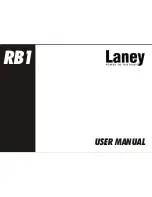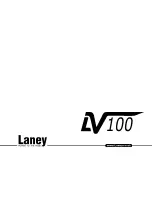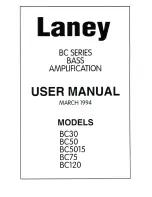
The material contained in this document is the property of Electronics & Innovation Ltd., it is
subject to change without notice.
March 2007
7
Revision B
In the default state, the RS-232 port will echo the same information sent to the
front panel LCD display, allowing a running datalog to be stored to disk using the
capture feature of the terminal program.
Single character commands can be sent to the amplifier to achieve the following:
"1" key enables telemetry (readback similar to LCD display) - this is the default
mode at power up
“2” key clears any faults and tries to start the supply.
“0” key disables telemetry (Complement to “1” key)
Custom commands and display lists can be implemented upon customer
request.
Chapter 3 Technical Description
3.1 GENERAL DESCRIPTION
The 1040L is designed to amplify signals by 55 dB in the frequency band of 10
KHz to 5 MHz. The signal from the front panel BNC connector is fed via a length
of 50 ohm coaxial cable into the input of the driver amplifier module. The signal
from the input of the driver is coupled to the input of the MMIC front end. The
output signal of the MMIC is coupled to the gate of transistor Q1. The further
amplified signal appearing at the drain of Q1 is coupled to the input of Q2. This is
transformed to 50
Ω
and fed to the driver output BNC port.
The driver output signal is fed through a length of coaxial cable to the input of the
power splitter, the two outputs of this are each fed to the two amplifier modules.
In each PA module the signal is split into two equal phase and amplitude signals.
These signals are fed to the inputs of transistors Q1 and Q2. The amplified
signals appearing at the drains of Q1 and Q2 are then fed to the output BNC port
via the impedance matching network. The output of both modules is then fed to
the combiner to produce a single signal.
The power signal is then fed into a length of 50 ohm coaxial cable to the RF bi-
directional coupler. The output of the coupler is then fed directly to the BNC
connector on the front panel, this is the unit output.
The forward and reverse coupled ports of the bi-directional coupler are fed to the
RF detector which is situated on the main control board. The RF detector feeds a
voltage, which is representative of the true RMS power to the control board
proper. The control board in turn drives the front panel display.































